
Last Updated on
Handguns are often acquired for the sake of convenience, to always have a firearm in case you might need it. After all, no other firearm is compact enough to fit anywhere on your person without attracting unnecessary attention. But even though pistols and revolvers are much easier to carry than other guns, the problem of their storage isn’t solved by their size alone. You need to think of a way of carrying them, but not just any way. You can’t carry a firearm in your hand without looking like a potential murderer and storing them in a backpack is fraught with having to rummage through your things to find what you need. When every second counts, you need something easily accessible, yet discreet. This is where a gun holster enters the scene.
Table of Contents
Introduction Into Holsters
Different Types of Holsters
IWB Holster
OWB Holster
Shoulder Holster
Pocket Holster
Ankle Holster
How to Find a Fitting Holster
Conclusion
FAQs
Introduction Into Holsters
Holsters are essential for any gun owner who wishes to safely and securely carry their handgun. They allow you to store your firearm discreetly and securely, while also allowing for easy and quick access in times of need. There are many different types of holsters designed for different purposes. Some, like competition holsters, are meant for open carry. Others, like concealed carry holsters, are designed to hide your firearm from prying eyes while keeping it easily accessible. The latter type probably includes the biggest number of styles, including inside-the-waistband (IWB), outside-the-waistband (OWB), pocket, shoulder and even ankle carry holsters. In this article, we will discuss the importance of choosing the right size holster for your particular firearm as well as some of the common types of holsters available on the market today.
Different Types of Holsters
When choosing a holster for your gun, it’s important to find the type that best suits your needs. There are many different styles of holsters fit for both open and concealed carry, each with its own advantages and disadvantages. Here’re the most popular types of holsters you can find on the market.
IWB Holsters
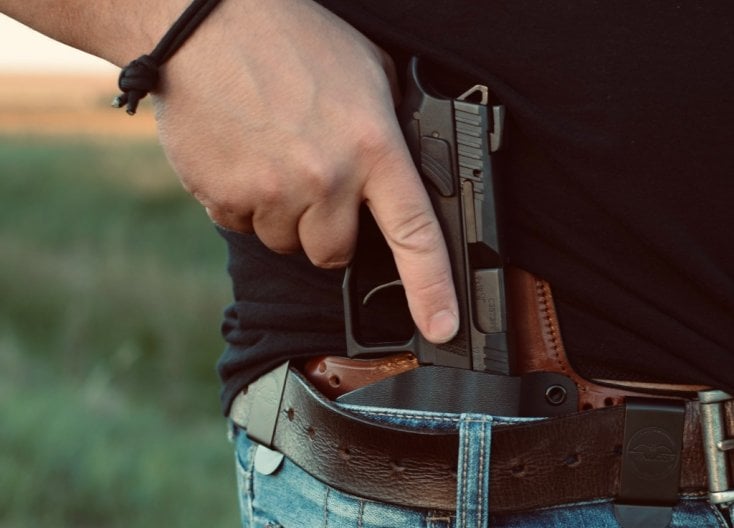
Inside the waistband (IWB) holsters are one of the most popular types of concealed carry holsters. IWB holsters are designed to be worn, surprise, inside the waistband of your pants, making them easy to hide and access quickly. They also provide a secure and comfortable fit, allowing you to move around without worrying about your holster slipping or shifting. However, IWB holsters can be uncomfortable when sitting down or bending over due to their close proximity to your body. Additionally, they may be difficult to draw from in certain situations due to their position on the body.
OWB Holsters
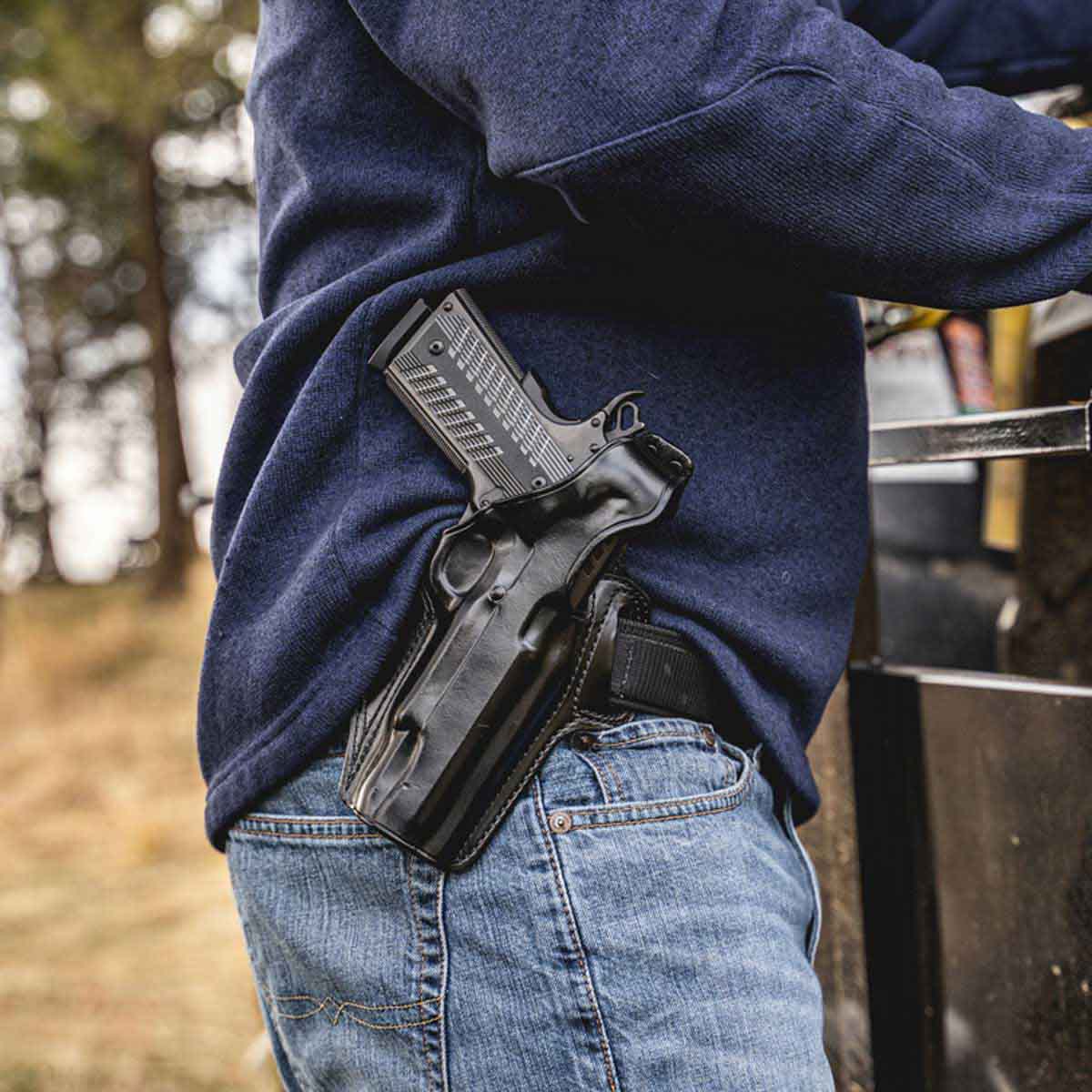
Outside the Waistband (OWB) holsters are the opposite of the IWB ones. As you’ve already guessed, they are designed to be worn outside of your clothing, making it easier to draw your firearm quickly when needed. OWB holsters offer several advantages, such as being much more comfortable than IWB holsters, being easy to draw from and allowing for quick access to your firearm. However, they are hardly suitable for concealed carry in warm weather, when there is no garment to cover them. They are a common choice for range shooters and people with long garments in their closets.
Shoulder Holsters
Shoulder holsters are worn over the shoulder and typically have two straps to secure them in place. They are popular among law enforcement officers, military personnel, and those carrying firearms for self-defense purposes. Shoulder holsters offer great comfort and concealment, but they can also be difficult to draw from quickly and may be uncomfortable when worn for extended periods. Additionally, they may not provide as much protection against accidental discharges as other types of holsters. They too require an overgarment if you are aiming for concealed carry.
Pocket Holsters
Pocket holsters are a safe alternative to simply carrying a firearm in a pocket. They provide an extra layer of protection and security when storing a firearm in your pocket. Pocket holsters are designed to fit securely and snugly into the pocket, while still allowing for quick access when needed. They also help keep the gun from rubbing against other items in the pocket, which can cause wear and tear over time.
While they offer convenience and security, they are not without their drawbacks. Those, however, have to do with the very concept of storing a firearm in your pocket. Depending on the size and capacity of your pocket, your holster might be distinctly visible eliminating the “concealed” part from the equation. It may also take some time for your hand to land on the pistol grip to withdraw your firearm. In short, it is important to carefully weigh the pros and cons of pocket holsters before deciding if they are right for you.
Ankle Holsters
Ankle holsters are a great choice for people who spend a major part of their days in a seated position. Such holsters are worn on the inside edge of the non-dominant leg. No other holster can boast their accessibility for a sitting person, but they lag behind other holsters when a person is standing. You also need to wear long pants with baggy bottoms to properly conceal an otherwise sticking-out holster. Many people use ankle holsters as a secondary or backup option should the primary weapon be inaccessible. That mostly concerns law-enforcement officers, since a regular civilian is not very likely to carry two guns on their person.
How to Find a Fitting Holster?
Finding a holster that fits your handgun is not as challenging as it may seem. The thing is that the vast majority of holsters are built if not for a particular gun model, then for several similar ones. Some can house as many as a dozen or two handgun models. You can find the information on the compatibility of a gun holster in its product description, in the Fit column. Many Glock holsters are compatible with several Glock models due to their similar measurements. Some holsters are designed for a particular model but can fit a similar-sized handgun. If you can’t find a holster for your handgun model, you can look for a holster designed for a gun with the same measurements.
When it comes to size specifications, we suggest you rely on information provided by the manufacturer or a responsible dealer. You can measure a gun on your own, of course, but there is a chance of making a mistake and basing your search on erroneous information. Rare is a gun that lacks manufacturer-provided measurements.
Conclusion
The handgun holsters market is anything but scarce. You can choose from a wide variety of styles that can cater to your particular request. Choosing a suitable type of holster is as important as getting a suitable fit. Your firearm may simply not fit into the holster, or fit in too loosely to be considered secure. Believe you us, you need neither of those things. That’s why it’s so important to check model compatibility in advance.
FAQs
What are the different types of gun holsters?
The most popular types are IWB, OWB, shoulder, pocket and ankle holsters. The list is not exhaustive, as there are holsters that can be attached to the chest, hip and any other part of your body.
What factors should be considered when choosing a gun holster?
- Comfort: When choosing a gun holster, comfort should be a priority. The holster should fit comfortably wherever you choose to wear it.
- Concealment: A gun holster should conceal the gun from view. However, the quality of that concealment depends on your capability to wear the holster properly. If you feel off when wearing an IWB holster, don’t push yourself and choose something different.
- Securement: Holsters need to ensure a secure grip on the firearm and keep it from falling out. Depending on the style of your holster, the number of securement options may vary.
Are there any special considerations for left-handed shooters when selecting a gun holster?
Yes, there are special considerations for left-handed shooters when selecting a gun holster. Left-handers will need to look for holsters specifically designed for left-handed use, as regular holsters are often designed to be worn on the right side of the body. We’d also recommend opting for holsters with adjustable straps, belt loops and cant for a more customizable fit.
Are there any safety tips to keep in mind when using a gun holster?
There are quite a few, but here’re the most important ones:
- Make sure your gun’s safety is on before putting the firearm into a holster.
- Always check whether your gun is securely holstered and cannot accidentally fall out.
- Make sure you always wear your holster in the same manner to ensure a rapid response in times of need.
- Be sure to use a holster that is the correct size and shape for your gun, as an ill-fitting holster can cause the gun to shift and become unsafe.
- Make sure your holster is properly secured to whatever you mount it onto.



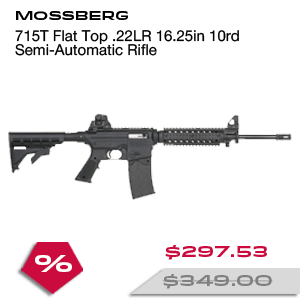
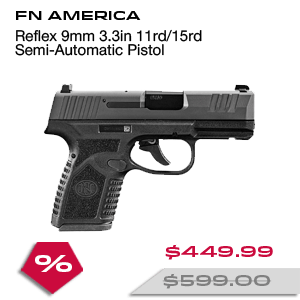
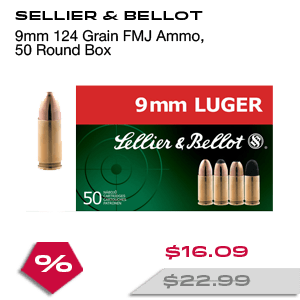

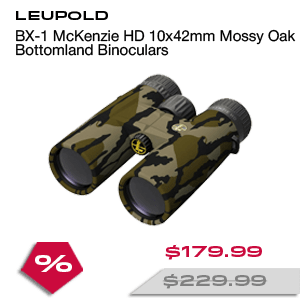
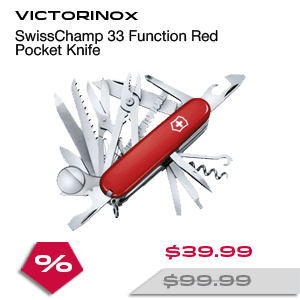




Leave a Reply